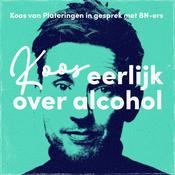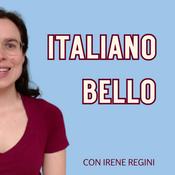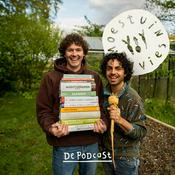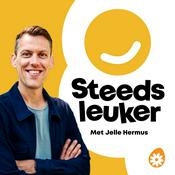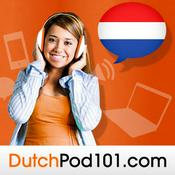74 afleveringen
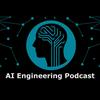
Generative AI Meets Accessibility: Benchmarks, Breakthroughs, and Blind Spots with Joe Devon
05-1-2026 | 56 Min.
Summary In this episode Joe Devon, co-founder of Global Accessibility Awareness Day (GAAD), talks about how generative AI can both help and harm digital accessibility — and what it will take to tilt the balance toward inclusion. Joe shares his personal motivation for the work, real-world stakes for disabled users across web, mobile, and developer tooling, and compelling stories that illustrate why accessible design is a human-rights issue as much as a compliance checkbox. He digs into AI’s current and future roles: from improving caption quality and auto-generating audio descriptions to evaluating how well code-gen models produce accessible UI by default. Joe introduces AIMAC (AI Model Accessibility Checker), a new benchmark comparing top models on accessibility-minded code generation, what the results reveal, and how model providers and engineering teams can practically raise the bar with linters, training data, and cultural change. He closes with concrete guidance for leaders, why involving people with disabilities is non-negotiable, and how solving for edge cases makes AI—and products—better for everyone. Announcements Hello and welcome to the AI Engineering Podcast, your guide to the fast-moving world of building scalable and maintainable AI systemsWhen ML teams try to run complex workflows through traditional orchestration tools, they hit walls. Cash App discovered this with their fraud detection models - they needed flexible compute, isolated environments, and seamless data exchange between workflows, but their existing tools couldn't deliver. That's why Cash App rely on Prefect. Now their ML workflows run on whatever infrastructure each model needs across Google Cloud, AWS, and Databricks. Custom packages stay isolated. Model outputs flow seamlessly between workflows. Companies like Whoop and 1Password also trust Prefect for their critical workflows. But Prefect didn't stop there. They just launched FastMCP - production-ready infrastructure for AI tools. You get Prefect's orchestration plus instant OAuth, serverless scaling, and blazing-fast Python execution. Deploy your AI tools once, connect to Claude, Cursor, or any MCP client. No more building auth flows or managing servers. Prefect orchestrates your ML pipeline. FastMCP handles your AI tool infrastructure. See what Prefect and Fast MCP can do for your AI workflows at aiengineeringpodcast.com/prefect today.Unlock the full potential of your AI workloads with a seamless and composable data infrastructure. Bruin is an open source framework that streamlines integration from the command line, allowing you to focus on what matters most - building intelligent systems. Write Python code for your business logic, and let Bruin handle the heavy lifting of data movement, lineage tracking, data quality monitoring, and governance enforcement. With native support for ML/AI workloads, Bruin empowers data teams to deliver faster, more reliable, and scalable AI solutions. Harness Bruin's connectors for hundreds of platforms, including popular machine learning frameworks like TensorFlow and PyTorch. Build end-to-end AI workflows that integrate seamlessly with your existing tech stack. Join the ranks of forward-thinking organizations that are revolutionizing their data engineering with Bruin. Get started today at aiengineeringpodcast.com/bruin, and for dbt Cloud customers, enjoy a $1,000 credit to migrate to Bruin Cloud.Your host is Tobias Macey and today I'm interviewing Joe Devon about opportunities for using generative AI to improve the accessibility of digital technologiesInterview IntroductionHow did you get involved in AI?Can you starty by giving an overview of what is included in the term "accessibility"?What are some of the major contributors to a lack of accessibility in digital experiences today?Beyond the web, what are some of the other platforms and interfaces that struggle with accessibility?What role does/can generative AI utilities play in improving the accessibility of applications?You recently helped create the AI Model Accessibility Checker (AIMAC) to benchmark which coding agents produce the most accessible code. What are the goals of that project and desired outcomes from its introduction?What were the key findings from AIMAC's initial benchmarking results? Were there any surprises in terms of which models performed better or worse at generating accessible code?The automation offered by using agentic software development toolchains reduces the manual effort involved in building accessible interfaces. What are the opportunities for using generative AI utilities to act as an assistive mechanism for existing sites/technologies?Beyond code generation, what other aspects of the AI development lifecycle need accessibility considerations - training data, model outputs, user interfaces for AI tools themselves?You co-host the Accessibility and Gen AI Podcast. What are some of the common misconceptions you encounter about AI's role in accessibility, either from the AI community or the accessibility community?There's often tension between moving fast with AI adoption and ensuring inclusive design. How do you advise engineering teams to balance innovation speed with accessibility requirements?What specific accessibility issues are most amenable to AI solutions today, and which ones still require human judgment and expertise?As AI models become more capable at generating code and interfaces, what guardrails or validation processes should engineering teams implement to ensure accessibility standards are met?How do you see the role of accessibility specialists evolving as AI tools become more prevalent in the development workflow? Does AI augment their work or change it fundamentally?For engineering leaders building platform and data infrastructure, what accessibility considerations should be baked into foundational systems that AI applications will be built upon?What are the most interesting, unexpected, or challenging lessons that you have learned while working on acessibility awareness?Contact Info LinkedInParting Question From your perspective, what are the biggest gaps in tooling, technology, or training for AI systems today?Closing Announcements Thank you for listening! Don't forget to check out our other shows. The Data Engineering Podcast covers the latest on modern data management. Podcast.__init__ covers the Python language, its community, and the innovative ways it is being used.Visit the site to subscribe to the show, sign up for the mailing list, and read the show notes.If you've learned something or tried out a project from the show then tell us about it! Email [email protected] with your story.To help other people find the show please leave a review on iTunes and tell your friends and co-workers.LinksAIMAC GitHubGlobal Accessibility Awareness Day (GAAD)GAAD FoundationAltaVistaCursorAccessibilityBraille DisplayBen OgilvieState of Mobile App Accessibility ReportVT-100GhosttyWarp TerminalLLM-as-a-JudgeFFMPEGAria TagsAxe-CoreMiniMax M1Codex MiniQwenKimiGoogle LighthouseGitHub CopilotBe-My-EyesBe-My-AIWebAIMXRAccessXR == Extended RealityDeque UniversityFable accessibility feedback organizationThe intro and outro music is from Hitman's Lovesong feat. Paola Graziano by The Freak Fandango Orchestra/CC BY-SA 3.0

Beyond the Chatbot: Practical Frameworks for Agentic Capabilities in SaaS
29-12-2025 | 53 Min.
Summary In this episode product and engineering leader Preeti Shukla explores how and when to add agentic capabilities to SaaS platforms. She digs into the operational realities that AI agents must meet inside multi-tenant software: latency, cost control, data privacy, tenant isolation, RBAC, and auditability. Preeti outlines practical frameworks for selecting models and providers, when to self-host, and how to route capabilities across frontier and cheaper models. She discusses graduated autonomy, starting with internal adoption and low-risk use cases before moving to customer-facing features, and why many successful deployments keep a human-in-the-loop. She also covers evaluation and observability as core engineering disciplines - layered evals, golden datasets, LLM-as-a-judge, path/behavior monitoring, and runtime vs. offline checks - to achieve reliability in nondeterministic systems. Announcements Hello and welcome to the AI Engineering Podcast, your guide to the fast-moving world of building scalable and maintainable AI systemsWhen ML teams try to run complex workflows through traditional orchestration tools, they hit walls. Cash App discovered this with their fraud detection models - they needed flexible compute, isolated environments, and seamless data exchange between workflows, but their existing tools couldn't deliver. That's why Cash App rely on Prefect. Now their ML workflows run on whatever infrastructure each model needs across Google Cloud, AWS, and Databricks. Custom packages stay isolated. Model outputs flow seamlessly between workflows. Companies like Whoop and 1Password also trust Prefect for their critical workflows. But Prefect didn't stop there. They just launched FastMCP - production-ready infrastructure for AI tools. You get Prefect's orchestration plus instant OAuth, serverless scaling, and blazing-fast Python execution. Deploy your AI tools once, connect to Claude, Cursor, or any MCP client. No more building auth flows or managing servers. Prefect orchestrates your ML pipeline. FastMCP handles your AI tool infrastructure. See what Prefect and Fast MCP can do for your AI workflows at aiengineeringpodcast.com/prefect today.Unlock the full potential of your AI workloads with a seamless and composable data infrastructure. Bruin is an open source framework that streamlines integration from the command line, allowing you to focus on what matters most - building intelligent systems. Write Python code for your business logic, and let Bruin handle the heavy lifting of data movement, lineage tracking, data quality monitoring, and governance enforcement. With native support for ML/AI workloads, Bruin empowers data teams to deliver faster, more reliable, and scalable AI solutions. Harness Bruin's connectors for hundreds of platforms, including popular machine learning frameworks like TensorFlow and PyTorch. Build end-to-end AI workflows that integrate seamlessly with your existing tech stack. Join the ranks of forward-thinking organizations that are revolutionizing their data engineering with Bruin. Get started today at aiengineeringpodcast.com/bruin, and for dbt Cloud customers, enjoy a $1,000 credit to migrate to Bruin Cloud.Your host is Tobias Macey and today I'm interviewing Preeti Shukla about the process for identifying whether and how to add agentic capabilities to your SaaSInterview IntroductionHow did you get involved in machine learning?Can you start by describing how a SaaS context changes the requirements around the business and technical considerations of an AI agent?Software-as-a-service is a very broad category that includes everything from simple website builders to complex data platforms. How does the scale and complexity of the service change the equation for ROI potential of agentic elements?How does it change the implementation and validation complexity?One of the biggest challenges with introducing generative AI and LLMs in a business use case is the unpredictable cost associated with it. What are some of the strategies that you have found effective in estimating, monitoring, and controlling costs to avoid being upside-down on the ROI equation?Another challenge of operationalizing an agentic workload is the risk of confident mistakes. What are the tactics that you recommend for building confidence in agent capabilities while mitigating potential harms?A corollary to the unpredictability of agent architectures is that they have a large number of variables. What are the evaluation strategies or toolchains that you find most useful to maintain confidence as the system evolves?SaaS platforms benefit from unit economics at scale and often rely on multi-tenant architectures. What are the security controls and identity/attribution mechanisms that are critical for allowing agents to operate across tenant boundaries?What are the most interesting, innovative, or unexpected ways that you have seen SaaS products adopt agentic patterns?What are the most interesting, unexpected, or challenging lessons that you have learned while working on bringing agentic workflows to SaaS products?When is an agent the wrong choice?What are your predictions for the role of agents in the future of SaaS products?Contact InfoLinkedInParting QuestionFrom your perspective, what are the biggest gaps in tooling, technology, or training for AI systems today?Links SaaS == Software as a ServiceMulti-TenancyFew-shot LearningLLM as a JudgeRAG == Retrieval Augmented GenerationMCP == Model Context ProtocolLoveableThe intro and outro music is from Hitman's Lovesong feat. Paola Graziano by The Freak Fandango Orchestra/CC BY-SA 3.0

MCP as the API for AI‑Native Systems: Security, Orchestration, and Scale
16-12-2025 | 1 u. 7 Min.
Summary In this episode Craig McLuckie, co-creator of Kubernetes and founder/CEO of Stacklok, talks about how to improve security and reliability for AI agents using curated, optimized deployments of the Model Context Protocol (MCP). Craig explains why MCP is emerging as the API layer for AI‑native applications, how to balance short‑term productivity with long‑term platform thinking, and why great tools plus frontier models still drive the best outcomes. He digs into common adoption pitfalls (tool pollution, insecure NPX installs, scattered credentials), the necessity of continuous evals for stochastic systems, and the shift from “what the agent can access” to “what the agent knows.” Craig also shares how ToolHive approaches secure runtimes, a virtual MCP gateway with semantic search, orchestration and transactional semantics, a registry for organizational tooling, and a console for self‑service—along with pragmatic patterns for auth, policy, and observability. Announcements Hello and welcome to the AI Engineering Podcast, your guide to the fast-moving world of building scalable and maintainable AI systemsWhen ML teams try to run complex workflows through traditional orchestration tools, they hit walls. Cash App discovered this with their fraud detection models - they needed flexible compute, isolated environments, and seamless data exchange between workflows, but their existing tools couldn't deliver. That's why Cash App rely on Prefect. Now their ML workflows run on whatever infrastructure each model needs across Google Cloud, AWS, and Databricks. Custom packages stay isolated. Model outputs flow seamlessly between workflows. Companies like Whoop and 1Password also trust Prefect for their critical workflows. But Prefect didn't stop there. They just launched FastMCP - production-ready infrastructure for AI tools. You get Prefect's orchestration plus instant OAuth, serverless scaling, and blazing-fast Python execution. Deploy your AI tools once, connect to Claude, Cursor, or any MCP client. No more building auth flows or managing servers. Prefect orchestrates your ML pipeline. FastMCP handles your AI tool infrastructure. See what Prefect and Fast MCP can do for your AI workflows at aiengineeringpodcast.com/prefect today.Unlock the full potential of your AI workloads with a seamless and composable data infrastructure. Bruin is an open source framework that streamlines integration from the command line, allowing you to focus on what matters most - building intelligent systems. Write Python code for your business logic, and let Bruin handle the heavy lifting of data movement, lineage tracking, data quality monitoring, and governance enforcement. With native support for ML/AI workloads, Bruin empowers data teams to deliver faster, more reliable, and scalable AI solutions. Harness Bruin's connectors for hundreds of platforms, including popular machine learning frameworks like TensorFlow and PyTorch. Build end-to-end AI workflows that integrate seamlessly with your existing tech stack. Join the ranks of forward-thinking organizations that are revolutionizing their data engineering with Bruin. Get started today at aiengineeringpodcast.com/bruin, and for dbt Cloud customers, enjoy a $1,000 credit to migrate to Bruin Cloud.Your host is Tobias Macey and today I'm interviewing Craig McLuckie about improving the security of your AI agents through curated and optimized MCP deploymentInterviewIntroductionHow did you get involved in machine learning?MCP saw huge growth in attention and adoption over the course of this year. What are the stumbling blocks that teams run into when going to production with MCP servers?How do improperly managed MCP servers contribute to security problems in an agent-driven software development workflow?What are some of the problematic practices or shortcuts that you are seeing teams implement when running MCP services for their developers?What are the benefits of a curated and opinionated MCP service as shared infrastructure for an engineering team?You are building ToolHive as a system for managing and securing MCP services as a platform component. What are the strategic benefits of starting with that as the foundation for your company?There are several services for managing MCP server deployment and access control. What are the unique elements of ToolHive that make it worth adopting?For software-focused agentic AI, the approach of Claude Code etc. to be command-line based opens the door for an effectively unbounded set of tools. What are the benefits of MCP over arbitrary CLI execution in that context?What are the most interesting, innovative, or unexpected ways that you have seen ToolHive/MCP used?What are the most interesting, unexpected, or challenging lessons that you have learned while working on ToolHive?When is ToolHive the wrong choice?What do you have planned for the future of ToolHive/Stacklok?Contact InfoGitHubLinkedInParting QuestionFrom your perspective, what are the biggest gaps in tooling, technology, or training for AI systems today?LinksStackLokMCP == Model Context ProtocolKubernetesCNCF == Cloud Native Computing FoundationSDLC == Software Development Life CycleThe Bitter LessonTLA+Jepsen TestsToolHiveAPI GatewayGleanThe intro and outro music is from Hitman's Lovesong feat. Paola Graziano by The Freak Fandango Orchestra/CC BY-SA 3.0

Context as Code, DevX as Leverage: Accelerating Software with Multi‑Agent Workflows
24-11-2025 | 59 Min.
Summary In this episode Max Beauchemin explores how multiplayer, multi‑agent engineering is reshaping individual and team velocity for building data and AI systems. Max shares his journey from Airflow and Superset to going all‑in on AI coding agents, describing a pragmatic “AI‑first reflex” for nearly every task and the emerging role of humans as orchestrators of agents. He digs into shifting bottlenecks — code review, QA, async coordination — and how better DevX/AIX, just‑in‑time context via tools, and structured "context as code" can keep pace with agent‑accelerated execution. He then dives deep into Agor, a new open‑source agent‑orchestration platform: a spatial, multiplayer canvas that manages git worktrees and shared dev environments, enables templated prompts and zone‑based workflows, and exposes an internal MCP so agents can operate the system — and each other. Max discusses session forking, sub‑session trees, scheduling, and safety considerations, and how these capabilities enable parallelization, handoffs across roles, and richer visibility into prompting and cost/usage—pointing to a near future where software engineering centers on orchestrating teams of agents and collaborators. Resources: agor.live (docs, one‑click Codespaces, npm install), Apache Superset, and related MCP/CLI tooling referenced for agent workflows. Announcements Hello and welcome to the AI Engineering Podcast, your guide to the fast-moving world of building scalable and maintainable AI systemsWhen ML teams try to run complex workflows through traditional orchestration tools, they hit walls. Cash App discovered this with their fraud detection models - they needed flexible compute, isolated environments, and seamless data exchange between workflows, but their existing tools couldn't deliver. That's why Cash App rely on Prefect. Now their ML workflows run on whatever infrastructure each model needs across Google Cloud, AWS, and Databricks. Custom packages stay isolated. Model outputs flow seamlessly between workflows. Companies like Whoop and 1Password also trust Prefect for their critical workflows. But Prefect didn't stop there. They just launched FastMCP - production-ready infrastructure for AI tools. You get Prefect's orchestration plus instant OAuth, serverless scaling, and blazing-fast Python execution. Deploy your AI tools once, connect to Claude, Cursor, or any MCP client. No more building auth flows or managing servers. Prefect orchestrates your ML pipeline. FastMCP handles your AI tool infrastructure. See what Prefect and Fast MCP can do for your AI workflows at aiengineeringpodcast.com/prefect today.Unlock the full potential of your AI workloads with a seamless and composable data infrastructure. Bruin is an open source framework that streamlines integration from the command line, allowing you to focus on what matters most - building intelligent systems. Write Python code for your business logic, and let Bruin handle the heavy lifting of data movement, lineage tracking, data quality monitoring, and governance enforcement. With native support for ML/AI workloads, Bruin empowers data teams to deliver faster, more reliable, and scalable AI solutions. Harness Bruin's connectors for hundreds of platforms, including popular machine learning frameworks like TensorFlow and PyTorch. Build end-to-end AI workflows that integrate seamlessly with your existing tech stack. Join the ranks of forward-thinking organizations that are revolutionizing their data engineering with Bruin. Get started today at aiengineeringpodcast.com/bruin, and for dbt Cloud customers, enjoy a $1,000 credit to migrate to Bruin Cloud.Your host is Tobias Macey and today I'm interviewing Maxime Beauchemin about the impact of multi-player multi-agent engineering on individual and team velocity for building better data systemsInterviewIntroductionHow did you get involved in the area of data management?Can you start by giving an overview of the types of work that you are relying on AI development agents for?As you bring agents into the mix for software engineering, what are the bottlenecks that start to show up?In my own experience there are a finite number of agents that I can manage in parallel. How does Agor help to increase that limit?How does making multi-agent management a multi-player experience change the dynamics of how you apply agentic engineering workflows?Contact InfoLinkedInLinksAgorApache AirflowApache SupersetPresetClaude CodeCodexPlaywright MCPTmuxGit WorktreesOpencode.aiGitHub CodespacesOnaThe intro and outro music is from Hitman's Lovesong feat. Paola Graziano by The Freak Fandango Orchestra/CC BY-SA 3.0

Inside the Black Box: Neuron-Level Control and Safer LLMs
16-11-2025 | 1 u.
Summary In this episode of the AI Engineering Podcast Vinay Kumar, founder and CEO of Arya.ai and head of Lexsi Labs, talks about practical strategies for understanding and steering AI systems. He discusses the differences between interpretability and explainability, and why post-hoc methods can be misleading. Vinay shares his approach to tracing relevance through deep networks and LLMs using DL Backtrace, and how interpretability is evolving from an audit tool into a lever for alignment, enabling targeted pruning, fine-tuning, unlearning, and model compression. The conversation covers setting concrete alignment metrics, the gaps in current enterprise practices for complex models, and tailoring explainability artifacts for different stakeholders. Vinay also previews his team's "AlignTune" effort for neuron-level model editing and discusses emerging trends in AI risk, multi-modal complexity, and automated safety agents. He explores when and why teams should invest in interpretability and alignment, how to operationalize findings without overcomplicating evaluation, and the best practices for private, safer LLM endpoints in enterprises, aiming to make advanced AI not just accurate but also acceptable, auditable, and scalable. Announcements Hello and welcome to the AI Engineering Podcast, your guide to the fast-moving world of building scalable and maintainable AI systemsWhen ML teams try to run complex workflows through traditional orchestration tools, they hit walls. Cash App discovered this with their fraud detection models - they needed flexible compute, isolated environments, and seamless data exchange between workflows, but their existing tools couldn't deliver. That's why Cash App rely on Prefect. Now their ML workflows run on whatever infrastructure each model needs across Google Cloud, AWS, and Databricks. Custom packages stay isolated. Model outputs flow seamlessly between workflows. Companies like Whoop and 1Password also trust Prefect for their critical workflows. But Prefect didn't stop there. They just launched FastMCP - production-ready infrastructure for AI tools. You get Prefect's orchestration plus instant OAuth, serverless scaling, and blazing-fast Python execution. Deploy your AI tools once, connect to Claude, Cursor, or any MCP client. No more building auth flows or managing servers. Prefect orchestrates your ML pipeline. FastMCP handles your AI tool infrastructure. See what Prefect and Fast MCP can do for your AI workflows at aiengineeringpodcast.com/prefect today.Unlock the full potential of your AI workloads with a seamless and composable data infrastructure. Bruin is an open source framework that streamlines integration from the command line, allowing you to focus on what matters most - building intelligent systems. Write Python code for your business logic, and let Bruin handle the heavy lifting of data movement, lineage tracking, data quality monitoring, and governance enforcement. With native support for ML/AI workloads, Bruin empowers data teams to deliver faster, more reliable, and scalable AI solutions. Harness Bruin's connectors for hundreds of platforms, including popular machine learning frameworks like TensorFlow and PyTorch. Build end-to-end AI workflows that integrate seamlessly with your existing tech stack. Join the ranks of forward-thinking organizations that are revolutionizing their data engineering with Bruin. Get started today at aiengineeringpodcast.com/bruin, and for dbt Cloud customers, enjoy a $1,000 credit to migrate to Bruin Cloud.Your host is Tobias Macey and today I'm interviewing Vinay Kumar about strategies and tactics for gaining insights into the decisions of your AI systemsInterview IntroductionHow did you get involved in machine learning?Can you start by giving a quick overview of what explainability means in the context of ML/AI?What are the predominant methods used to gain insight into the internal workings of ML/AI models?How does the size and modality of a model influence the technique and evaluation of methods used?What are the contexts in which a team would incorporate explainability into their workflow?How might explainability be used in a live system to provide guardrails or efficiency/accuracy improvements?What are the aspects of model alignment and explainability that are most challenging to implement?What are the supporting systems that are necessary to be able to effectively operationalize the collection and analysis of model reliability and alignment?"Trust", "Reliability", and "Alignment" are all words that seem obvious until you try to define them concretely. What are the ways that teams work through the creation of metrics and evaluation suites to gauge compliance with those goals?What are the most interesting, innovative, or unexpected ways that you have seen explainability methods used in AI systems?What are the most interesting, unexpected, or challenging lessons that you have learned while working on explainability/reliability at AryaXAI?When is evaluation of explainability overkill?What do you have planned for the future of AryaXAI and explainable AI?Contact Info LinkedInParting Question From your perspective, what are the biggest gaps in tooling, technology, or training for AI systems today?Closing Announcements Thank you for listening! Don't forget to check out our other shows. The Data Engineering Podcast covers the latest on modern data management. Podcast.__init__ covers the Python language, its community, and the innovative ways it is being used.Visit the site to subscribe to the show, sign up for the mailing list, and read the show notes.If you've learned something or tried out a project from the show then tell us about it! Email [email protected] with your story.To help other people find the show please leave a review on iTunes and tell your friends and co-workers.Links Lexsi LabsAyra.aiDeep LearningAlexNetDL BacktraceGradient BoostSAE == Sparse AutoEncoderShapley ValuesLRP == Layerwise Relevance PropagationIG == Integrated GradientsCircuit DiscoveryF1 ScoreLLM As A JudgeThe intro and outro music is from Hitman's Lovesong feat. Paola Graziano by The Freak Fandango Orchestra/CC BY-SA 3.0
Meer Onderwijs podcasts
Trending Onderwijs -podcasts
Over AI Engineering Podcast
Luister naar AI Engineering Podcast, Dutch Today: leer Nederlands met Martijn en vele andere podcasts van over de hele wereld met de radio.net-app

Ontvang de gratis radio.net app
- Zenders en podcasts om te bookmarken
- Streamen via Wi-Fi of Bluetooth
- Ondersteunt Carplay & Android Auto
- Veel andere app-functies
Ontvang de gratis radio.net app
- Zenders en podcasts om te bookmarken
- Streamen via Wi-Fi of Bluetooth
- Ondersteunt Carplay & Android Auto
- Veel andere app-functies


AI Engineering Podcast
download de app,
luisteren.









